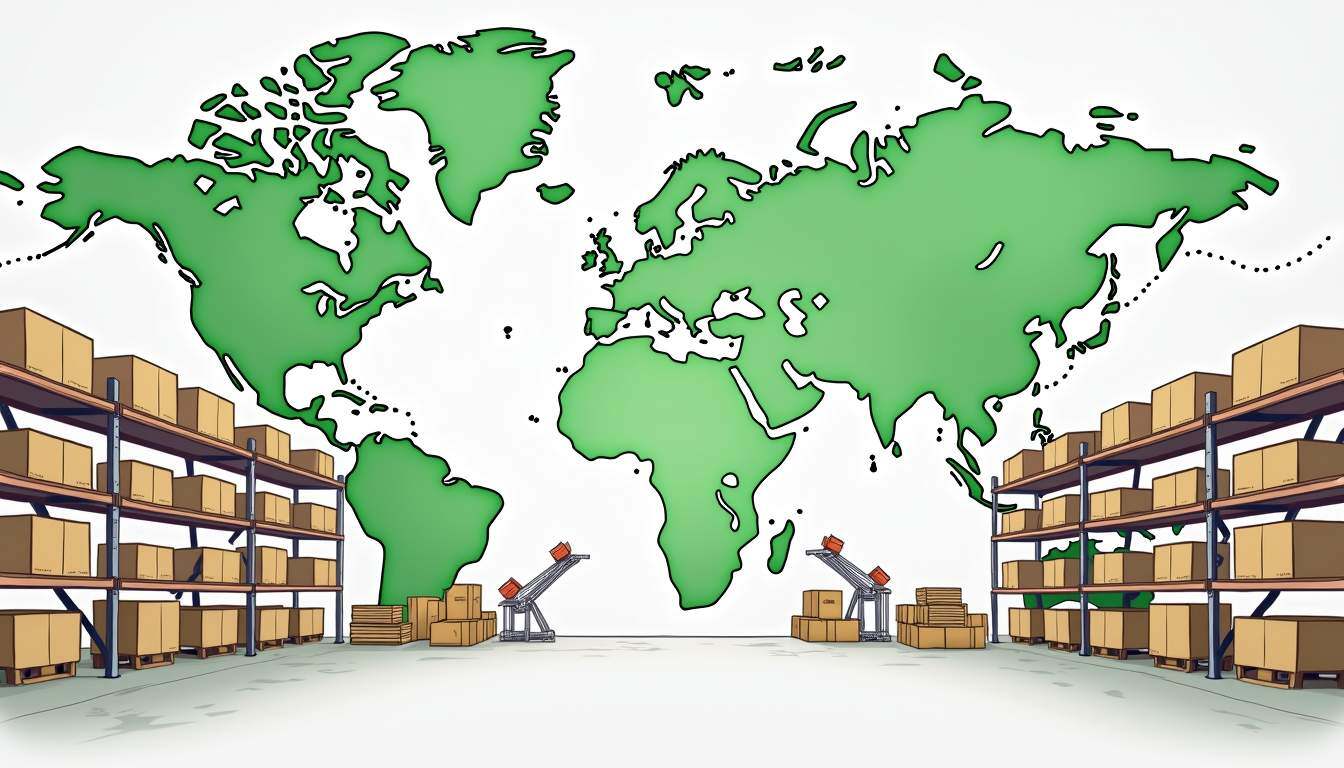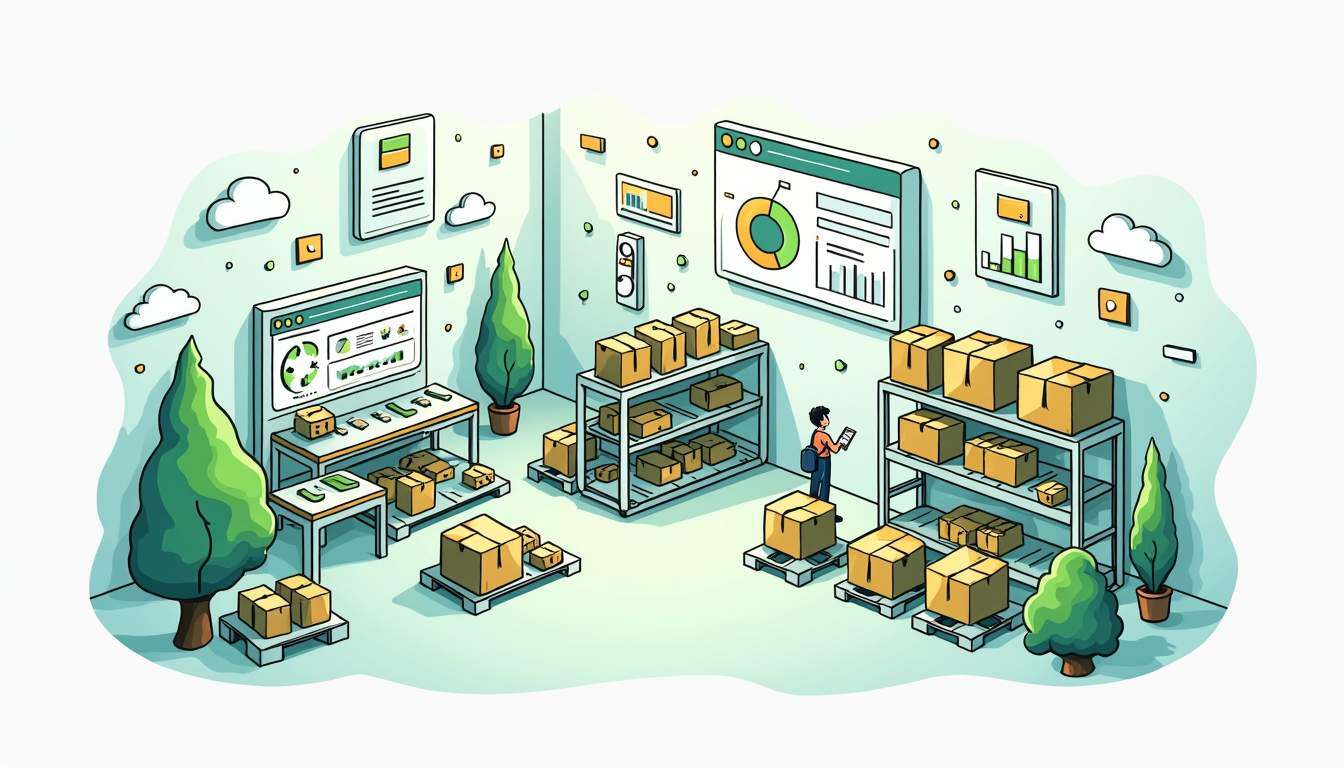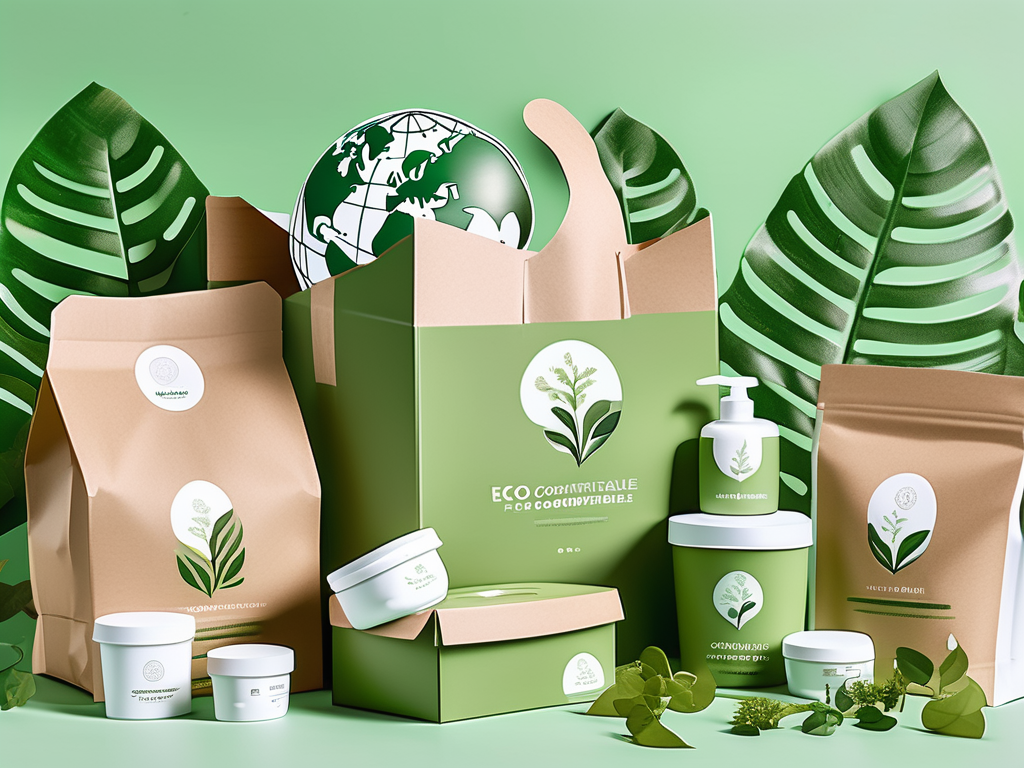Share this
Warehouse Solutions That Power Scalable Ecommerce Expansion
by Shipfusion Team on Apr. 23, 2025

Ecommerce growth doesn’t just demand more products or marketing muscle – it demands precision behind the scenes. Efficient warehouse solutions are the infrastructure that keep expanding businesses operating smoothly. As order volumes climb and customer expectations tighten, ecommerce companies must rethink how they store, process, and move inventory.
The right warehouse solution goes beyond square footage. It’s a mix of intelligent systems, scalable processes, and strategic partnerships that eliminate friction from the fulfillment cycle. This article breaks down what modern ecommerce businesses need to consider when choosing or optimizing their warehouse setup – including automation, real-time systems, outsourcing, and layout planning.
Why Warehouse Solutions Are Central to Ecommerce Performance
Effective warehouse solutions solve more than logistical problems – they create competitive advantages. Delays, stockouts, and packing errors cost more than money; they erode customer trust and retention. A well-tuned warehouse operation is foundational to delivering a consistent, positive experience.
1. Speed and Accuracy In Fulfillment
Consumers expect fast, accurate deliveries as standard. According to a 2024 consumer survey by MetaPack, 83% of online shoppers won’t return to a brand after a poor delivery experience. Optimized warehouse systems reduce picking errors, shorten fulfillment times, and allow teams to manage higher volumes without compromising accuracy.
2. Real-Time Inventory Visibility
Knowing where every SKU sits at any given time – across multiple channels and fulfillment nodes – is now essential. Whether you sell on Shopify, Amazon, or your own DTC platform, modern warehouse solutions offer real-time inventory data to avoid overselling, streamline replenishment, and drive better demand forecasting.
3. Flexible Scaling
Traditional warehousing can't handle rapid ecommerce scaling without bottlenecks. Seasonal demand spikes, product launches, or viral campaigns can expose gaps in space or labor capacity. Flexible warehouse models, including shared environments and third-party partnerships, help brands grow quickly without investing in fixed overhead.
Core Types of Warehouse Solutions for Ecommerce
Ecommerce businesses generally fall into three categories: early-stage, growth-stage, and enterprise. Each stage comes with a different set of warehousing needs. Let’s explore the main warehouse solutions designed to meet those demands.
1. Third-Party Logistics (3PL) Providers
A third-party logistics (3PL) company is a fulfillment partner that manages storage, picking, packing, shipping, and returns on behalf of ecommerce brands. These partners operate large, shared warehouse networks and bring advanced systems that most brands can’t afford to build internally.
Why 3PLs make sense for ecommerce:
-
Geographic reach: Fast delivery from strategically located facilities.
-
Expertise: 3PLs optimize labor, storage layout, and shipping processes.
-
Lower capital risk: You pay for what you use – no need to lease or build space.
-
Technology integrations: Most modern 3PLs plug directly into ecommerce platforms for seamless inventory syncing and order flow.
Example: A growing beauty brand with increasing B2B and DTC demand can rely on a 3PL to manage pallet storage for wholesale orders and same-day fulfillment for DTC, all within one warehouse.
2. Dedicated Warehouses (Owned or Leased)
For businesses with high and consistent volume, operating a dedicated warehouse or fulfillment center can offer full control over processes and branding. This route requires more investment in people, technology, and infrastructure – but it can also increase margins and create unique customer experiences (like branded packaging or special kitting workflows).
However, dedicated warehouses must still be equipped with modern tools to remain competitive.
-
Warehouse Management Systems (WMS)
-
RFID or barcode-based inventory systems
-
Labor tracking tools
-
Kitting and assembly stations
Considerations: Brands choosing this path need to weigh the cost of operating their own warehouse against the operational gains of working with a 3PL.
Technologies Powering Modern Warehouse Solutions
Warehouse solutions today are more than floor plans and forklifts. They're technology ecosystems that combine hardware and software to streamline operations and deliver accurate data.
1. Cloud-Based Warehouse Management Systems (WMS)
A WMS is the digital core of a warehouse. It controls how inventory is received, stored, picked, packed, and shipped. Cloud-based systems offer flexibility, security, and real-time access from anywhere.
Key WMS benefits:
-
Real-time inventory tracking
-
Seamless integration with ecommerce platforms (e.g., Shopify, BigCommerce, Amazon)
-
SKU-level performance reports
-
Automated reorder point alerts
-
Multi-location inventory coordination
Many modern WMS platforms also allow for rules-based workflows – for example, always choosing the lowest-cost shipping option for an order or assigning orders to the closest fulfillment location based on zip code.
2. Automated Picking and Packing Systems
Labor accounts for a significant portion of warehouse operational costs. Automation offsets this by taking over repetitive, manual tasks:
-
Conveyor systems for item transport
-
Pick-to-light and voice-picking systems for guided fulfillment
-
Automated storage and retrieval systems (AS/RS) to reduce travel time
-
Packing machines for high-volume shipping lines
These technologies not only speed up processing but also reduce human error, especially during peak seasons when temporary labor is common.
3. Robotics and AI in Warehousing
Warehouse robotics – such as mobile robots that retrieve inventory or collaborative bots that assist human pickers – are increasingly viable for mid-sized operations. AI tools can analyze order trends, predict stockouts, and optimize space utilization down to the bin level.
Use cases include:
-
Dynamic slotting: Adjusting product locations based on order frequency.
-
Demand forecasting: Using historical data to automate replenishment.
-
Returns handling: Sorting and decisioning returned products automatically.
How to Choose the Right Warehouse Solution
Every ecommerce business is different. What works for a subscription-based wellness brand may not suit a high-SKU fashion retailer. Here are key decision factors when evaluating warehouse solutions.
1. Product Type and Volume
-
Are you dealing with perishable items requiring temperature control?
-
Do your products vary in size, requiring special racking?
-
How many SKUs do you carry, and how often do they rotate?
Matching your product type to the correct infrastructure (e.g., lot tracking for regulated goods) is essential.
2. Order Complexity
-
Do your orders include bundles, kits, or customized items?
-
Do you need value-added services like gift wrapping or inserts?
-
Do you fulfill B2B orders alongside DTC?
Warehouse solutions should support the specific workflows your brand promises, not force you to adapt them.
3. Geographic Strategy
Today’s ecommerce customers expect two-day delivery or faster. Your warehouse strategy should support proximity to key markets or carriers. That might mean:
-
Using multiple regional warehouses to reduce shipping zones
-
Partnering with a 3PL that offers multi-node fulfillment
Choosing warehouse locations near major carrier hubs (FedEx, UPS)
4. Technical Integration
Choose a warehouse solution that integrates seamlessly with your existing tech stack. This avoids manual workarounds, sync errors, and delays in order updates. Look for:
-
API integrations with ecommerce platforms
-
Compatibility with inventory forecasting tools
-
Support for marketplaces like Amazon or Walmart
Warehouse Layout and Design: Often Overlooked, Always Impactful
Even the best technology underperforms if a warehouse isn’t physically optimized. Layout affects picking speed, safety, and inventory accuracy. Smart warehouse solutions include space planning and dynamic layout adjustments based on demand.
Best practices include:
-
Zoning by SKU velocity: Fast-movers near packing stations, slow-movers further out
-
Using vertical space: Especially in high-volume or small-footprint locations
-
Defined returns and quarantine areas: To keep operations clean and accurate
-
Cross-docking setups: For high-volume SKUs with minimal handling
Combining B2B and DTC In One Warehouse
Many growing ecommerce brands sell to both retail partners and end customers. Managing both fulfillment models in a single warehouse is possible, but it requires:
-
Flexible racking and bin systems to accommodate pallet and unit-level storage
-
Split workflows for wholesale vs. DTC orders
-
Real-time inventory visibility across both channels
-
Carrier routing rules for small parcel vs. LTL freight
A unified warehouse solution prevents the need to duplicate inventory or run separate teams, making growth more efficient.
Warehouse Solutions Built for Growth By Shipfusion
At Shipfusion, we design warehouse solutions specifically for scaling ecommerce brands – no generic workflows, no tradeoffs between service and speed. Our platform connects directly with your sales channels, synchronizing inventory, automating fulfillment, and giving you full visibility across every order.
We operate over one million square feet of fulfillment space across North America, built to handle DTC, B2B, and custom warehouse projects. Whether you're shipping influencer kits, managing lot-tracked health products, or launching into new regions, our solutions scale with you – not against you.
Why ecommerce brands choose Shipfusion:
-
Dedicated Account Managers, not call-center reps
-
99.9% on-time fulfillment rate
-
Custom warehouse projects including kitting, labeling, and rework
-
Proprietary software for real-time reporting and inventory control
-
Competitive shipping rates via our carrier network
Get a quote today and explore how Shipfusion's warehouse solutions can support your next stage of ecommerce growth.
Share this
You May Also Like
These Related Articles

Shopify WMS: Elevate Your Ecommerce Operations

Earth Friendly Packaging: Smarter Choices for Sustainable Shipping

Order Fulfillment Strategies to Ensure eCommerce Success
- April 2025 (21)
- March 2025 (26)
- February 2025 (26)
- January 2025 (37)
- December 2024 (16)
- November 2024 (23)
- October 2024 (22)
- September 2024 (27)
- August 2024 (9)
- July 2024 (8)
- June 2024 (5)
- May 2024 (8)
- April 2024 (8)
- March 2024 (6)
- February 2024 (6)
- January 2024 (5)
- December 2023 (3)
- November 2023 (3)
- October 2023 (5)
- September 2023 (4)
- August 2023 (2)
- July 2023 (1)
- June 2023 (4)
- March 2023 (2)
- October 2022 (1)
- September 2022 (5)
- August 2022 (4)
- July 2022 (7)
- June 2022 (4)
- May 2022 (4)
- April 2022 (6)
- March 2022 (2)
- February 2022 (1)
- January 2022 (3)
- December 2021 (2)
- November 2021 (4)
- October 2021 (2)
- September 2021 (5)
- August 2021 (4)
- July 2021 (4)
- June 2021 (3)
- May 2021 (2)
- April 2021 (3)
- March 2021 (3)
- February 2021 (3)
- January 2021 (2)
- December 2020 (4)
- November 2020 (2)
- October 2020 (4)
- September 2020 (2)
- July 2020 (5)
- June 2020 (4)
- May 2020 (2)
- April 2020 (2)
- March 2020 (4)
- February 2020 (1)
- December 2019 (1)
- May 2018 (1)
- March 2018 (2)
- February 2018 (3)
- January 2018 (3)
- November 2017 (3)
- July 2017 (4)
- March 2017 (3)
- February 2017 (5)
- January 2017 (3)
- December 2016 (4)
- November 2016 (6)
- October 2016 (6)
- October 2015 (1)
- September 2015 (1)
- June 2015 (3)
- May 2015 (3)
- August 2014 (1)
- July 2014 (1)
- March 2014 (1)
- February 2014 (1)